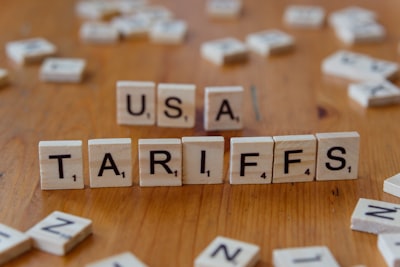Summary:
On July 7, 2025, President Trump announced steep new tariffs—25% on key exports—from two of America’s closest allies, Japan and South Korea, set to take effect August 1 unless trade deals are struck beforehand. These tariffs would hit major sectors such as automobiles, steel, and electronics, intensifying already delicate trade negotiations. The markets responded negatively; the S&P 500 dropped up to 1% and other indices followed suit. Trump’s administration plans to notify 12–15 other countries about similar tariff threats. The announcement comes as both Japan and South Korea are in the midst of their own political transitions, making swift negotiation unlikely.
Analysis:
Trump’s move revives the confrontational trade tactics that defined much of his first term, especially with historic allies. The explicit framing of the US as the “Number One Market” invites partners to negotiate, but the aggressive use of tariffs (or their threat) signals an underlying shift: from multilateral cooperation towards transactional, bilateral deals.
There are immediate economic implications. Such tariffs would raise costs for US consumers, disrupt global supply chains (especially in autos and electronics), and increase global economic uncertainty. The market selloff reflects fears of a broadening trade war at a moment when the global economy remains sensitive. Politically, this approach may play well among Trump’s supporters who welcome hardball tactics, but it risks alienating key allies and weakening the international alliances that have underpinned postwar US economic leadership.
Notably, the article hints at complex motivations: both Japan and South Korea’s slow pace reflects not only their own elections but also wariness over unpredictable US policy. There is also a lack of detail about what “fair” and “balanced” trade signifies under Trump’s doctrine; such nebulous criteria give the White House broad discretion to ratchet up or ease tensions at will.
Discussion:
This development matters for several reasons:
Global Trade Architecture: Repeated tariff threats undermine the predictability and rules-based order of the international trade system. If major economies bypass established negotiation frameworks, tit-for-tat protectionism could become more common.
US Alliances at Stake: Targeting allies with punitive economic measures is a risky strategy. While intended to secure better deals, it might encourage US partners to diversify away from American markets or tighten their own bilateral and regional alliances.
Erosion of US Economic Diplomacy: The persistence of these tactics could diminish the US’s soft power and moral authority. Countries may perceive Washington as an unreliable partner, complicating support on other shared priorities like security or technology cooperation.
Historical Echoes and Future Precedents: Trump’s tariff escalation recalls earlier rounds of global protectionism, such as the trade wars of the 1930s and the recent 2018-2019 disputes. Each time, they triggered retaliation and global economic slowdowns. Will history repeat?
Critical questions remain: Are tariffs a legitimate bargaining tool—credible threats forcing overdue reform—or reckless gambles with global prosperity? And as economic nationalism rises, can cooperative solutions still succeed?
The next weeks will test not only Trump’s negotiating skills but also the resilience of an interconnected world economy—and whether friends can withstand pressure without turning into rivals.

Comments
No comments yet. Be the first to comment!